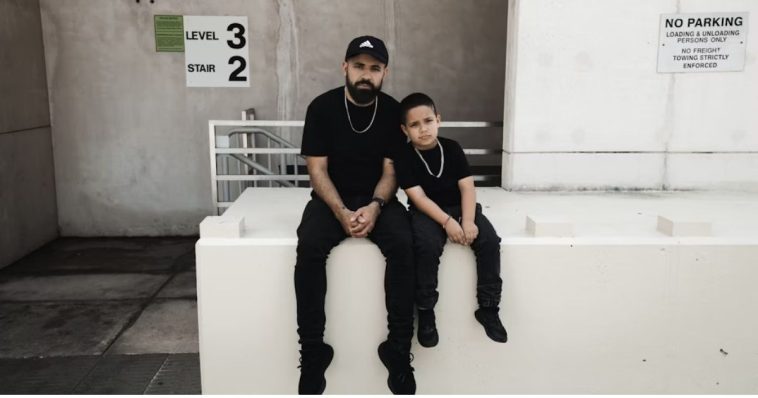Fashion is having a family moment, and it’s more than just cute—it’s a cultural phenomenon. Matching outfits, often playfully referred to as “matchy-matchy” looks, have been dominating social media feeds, family events, and even high-end fashion campaigns. Whether it’s a mother and daughter in identical floral dresses or a father-son duo rocking the same sneakers, this trend turns clothing into a shared language of connection, style, and fun.
What started as a playful way to look good in family photos has evolved into a global style statement—bridging generations, blending personal branding with emotional bonding, and giving rise to an entire industry dedicated to matching sets.
The Origins of Matching Outfits
The idea of coordinating clothes across generations has a long and evolving history. In the early 20th century, luxury family portraits frequently featured matching formalwear, serving as a symbol of unity, social status, and familial pride. These carefully orchestrated ensembles reflected both the fashion norms of the time and an emphasis on presenting the family as a cohesive, stylish unit.
By the 1950s and 1960s, the concept entered mainstream culture through department store catalogs promoting “Mommy and Me” dresses. These sets portrayed an idealized and coordinated vision of family life—wholesome, aspirational, and thoughtfully styled. Through fashion, it reinforces social values of harmony and elegance.
The trend saw a significant revival in the 2000s, propelled by celebrity influence. High-profile families such as Beyoncé and Blue Ivy or David Beckham and his children popularized twinning as a desirable style choice. Their polished, coordinated looks transformed the perception of matching outfits from quaint or kitschy to stylish and aspirational.
Today, brands spanning from fast-fashion giants like Zara to luxury houses like Gucci are capitalizing on this blend of nostalgia and contemporary style. The resurgence of coordinated family outfits reflects a modern desire to combine tradition with personal expression, turning twinning into a dynamic and inclusive fashion movement.
The Social Media Effect
Instagram and TikTok have launched the trend into stratospheres previously uncharted. Matching outfits photograph beautifully, turning everyday errands into influencer-worthy content. The hashtag #MommyAndMe alone has millions of posts, while #MiniMe and #Twinning add even more fuel to the fire.
Social platforms also encourage parents to view fashion as part of their family’s “personal brand.” Carefully curated feeds feature seasonal looks—cozy knitwear in winter, coordinated swimsuits in summer—turning wardrobe planning into a creative hobby and a bonding ritual.
What Makes Coordinated Parent-Child Looks So Popular
The appeal of parent-child coordinated outfits goes well beyond simple aesthetics, tapping into emotional, social, and cultural layers that make this trend meaningful and enduring. Several key factors contribute to the widespread love for twinning:
Emotional Connection
Dressing in similar clothes creates a clear sense of family togetherness. Coordinated outfits act as visual symbols of togetherness, helping to strengthen bonds between parents and children. These shared looks often become part of cherished family memories, marking special occasions or everyday moments alike, and are frequently captured in photos that families revisit for years to come.
Playful Expression
Coordinated outfits offer an enjoyable, relaxed opportunity to express personality and creativity through style. The practice allows families to experiment with colors, patterns, and themes that reflect their unique style, without the need for elaborate or formal dressing. For kids, especially, twinning can feel empowering, giving them a chance to playfully express their identity alongside their parents in a lighthearted, joyful way.
Photogenic Appeal
Coordinated clothing naturally enhances visual harmony and balance in photographs. This symmetry not only makes images more eye-catching but also creates a polished, put-together look that is especially popular on social media platforms. Whether capturing candid moments or staged family portraits, matching outfits elevate the aesthetic, making photos stand out and preserving memories with style.
Trend Participation
Beyond personal expression, coordinated dressing offers families a way to actively engage with current pop culture and fashion movements. Matching outfits can include trending styles, popular colors, or iconic motifs, allowing families to show a collective connection to the larger cultural conversation. This shared participation strengthens family identity and highlights how fashion can be a communal, intergenerational experience.
From Fast Fashion to Luxury Runways
This trend isn’t just about affordable matching sets from high street stores. Luxury labels have entered the game, offering miniaturized versions of their most popular designs for kids. Brands like Burberry, Dior, and Dolce & Gabbana now offer “family capsules” that cater to coordinated styling.
Meanwhile, smaller boutique brands and Etsy creators offer personalized matching looks—from hand-embroidered denim jackets to custom-printed tees—giving parents endless ways to create unique twinning moments without looking mass-produced.
The Role of Inclusivity and Diversity
In recent years, the matchy-matchy trend has evolved to be more inclusive. It’s not just about mother-daughter dresses anymore—fathers, same-sex parents, adoptive families, and multigenerational households are all embracing coordinated fashion. The range now includes gender-neutral clothing, adaptive wear for kids with disabilities, and culturally significant attire for holidays and traditions.
Seasonal & Occasion-Based Matching
The true strength of parent-child coordinated outfits lies in their remarkable adaptability, fitting seamlessly into a wide range of seasons and special occasions. This flexibility makes the trend accessible and relevant year-round, catering to different family lifestyles and events. Some of the most popular occasions for twinning include:
Holiday Outfits
Festive seasons provide perfect opportunities for matching looks, whether it’s cozy, themed pajamas for Christmas morning or coordinated costumes for Halloween. These outfits not only heighten the holiday spirit but also create memorable moments that families treasure for years.
Vacation Wear
Matching swimwear or tropical prints have become go-to choices for family beach trips and summer vacations. Coordinated outfits add a playful, polished touch to relaxed holiday vibes, making group photos more vibrant and fun while keeping everyone comfortable and stylish under the sun.
Formal Events
Elegant parent-child ensembles are increasingly popular for formal gatherings such as weddings, christenings, or milestone birthday parties. Coordinated dresses, suits, or accessories elevate the occasion, projecting sophistication and a sense of family harmony that resonates in photos and memories alike.
Everyday Casual
Twinning is not limited to special occasions. Many families embrace coordinated casual wear for weekend outings or everyday hangouts. Denim-on-denim looks, graphic tees with complementary designs, or matching cozy sweatshirts provide effortless style that’s both practical and visually cohesive.
Styling Tips for Parent-Child Coordination
Achieving a stylish parent-child coordinated look is all about balance—creating harmony without veering into over-the-top matching. Here are some practical tips to pull off twinning with ease and elegance:
Coordinate, Don’t Clone
Rather than wearing identical outfits, opt for complementary colors, patterns, or themes. This approach allows each individual’s style to shine while maintaining a cohesive family look. For example, pairing a soft pastel blouse with a patterned skirt in similar hues creates a connection without appearing overly uniform.
Play with Accessories
Subtle twinning can be achieved through matching accessories such as hats, sneakers, scarves, or bags. These accents bring cohesion without requiring the whole outfit to be identical. Coordinated accessories also offer versatility, allowing family members to express their style while staying visually linked.
Mix Textures and Layers
Incorporating different fabrics and layering pieces enhances visual interest and helps avoid a “costume-like” feel. For instance, pairing a chunky knit sweater with smooth denim or layering a graphic tee under a denim jacket creates depth and dimension in coordinated outfits. This also makes the look more dynamic and wearable across different settings.
Stay True to Comfort
Above all, children’s clothing should prioritize comfort and functionality. Coordinated outfits that restrict movement or feel uncomfortable can quickly lose their appeal. Choosing soft, breathable fabrics and designs that accommodate play ensures that style doesn’t come at the expense of practicality.
The Business of Twinning
The growing popularity of parent-child coordinated outfits has sparked the emergence of a vibrant niche market within the fashion industry. A variety of dedicated online retailers now specialize in family matching collections, offering everything from everyday casual sets to holiday-themed apparel. Subscription boxes tailored to twinning enthusiasts provide curated seasonal looks delivered right to the door, while pop-up shops and family-focused events create opportunities for hands-on shopping and community engagement.
Retailers are increasingly harnessing the power of influencer marketing, collaborating with social media personalities who showcase their twinning styles to large audiences. Limited-edition drops and themed capsule collections keep the trend fresh and engaging, encouraging repeat purchases throughout the year.
For brands, matchy-matchy fashion goes beyond mere garments—it represents a lifestyle centered on connection, creativity, and shared experiences. This emotional appeal helps foster brand loyalty and positions coordinated family fashion as both a style statement and a meaningful form of family expression.
The Future of Coordinated Family Fashion
The next chapter of this trend will likely lean into personalization and sustainability. Expect to see:
- Custom Digital Prints – Families designing their fabrics online.
- Upcycled Matching Looks – Turning old clothes into coordinated outfits.
- Smart Clothing Tech – Fabrics that adjust to temperature or change color in sync.
With the rise of AI-assisted design tools, families might soon be able to virtually try on matching looks before they’re even made.
The Heartfelt Power of Parent-Child Outfits
Parent-child coordinated outfits might be a visual delight, but their real power lies in emotional storytelling. Whether it’s a candid holiday photo, a playful day in the park, or a moment on the red carpet, matching outfits turn fleeting moments into lasting memories. In a fast-moving world, they remind us that sometimes the most stylish thing you can wear is togetherness.



